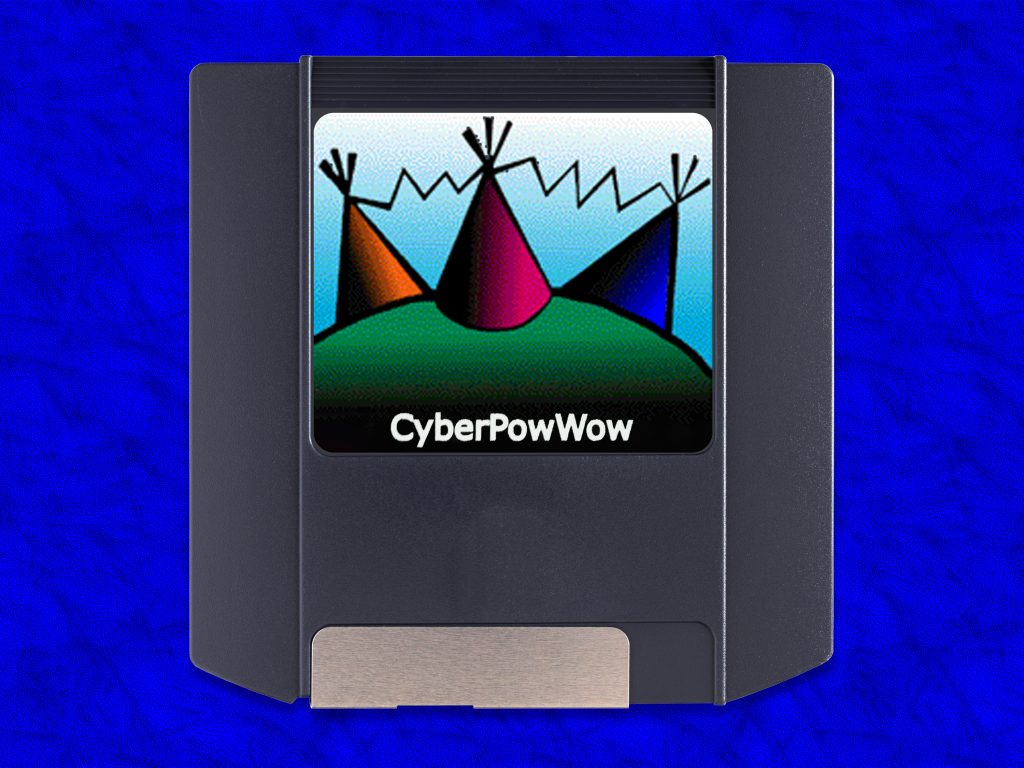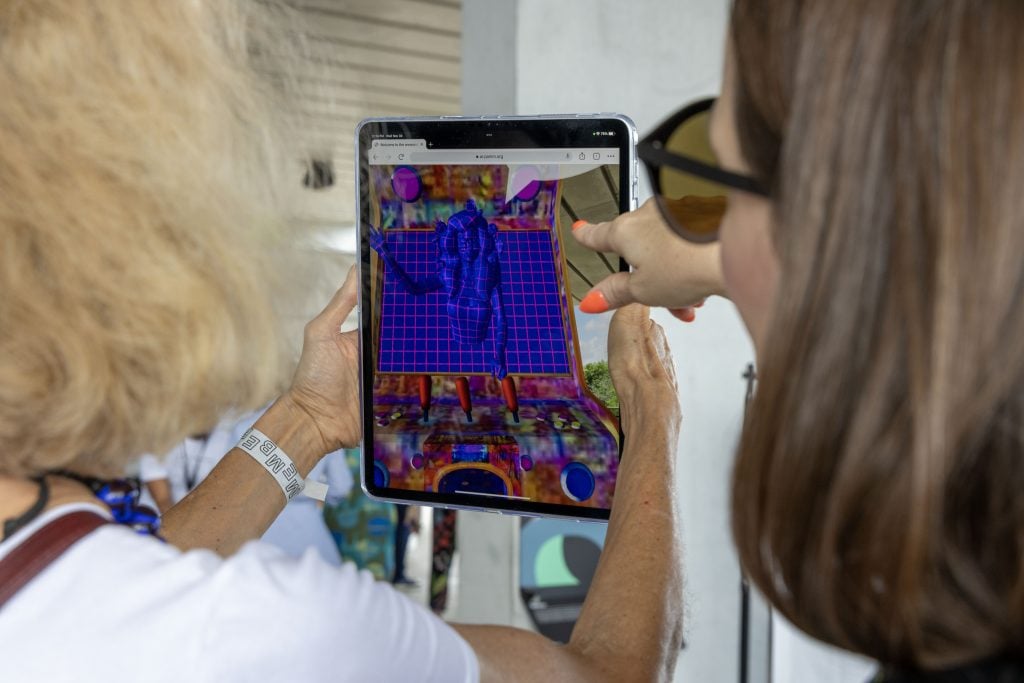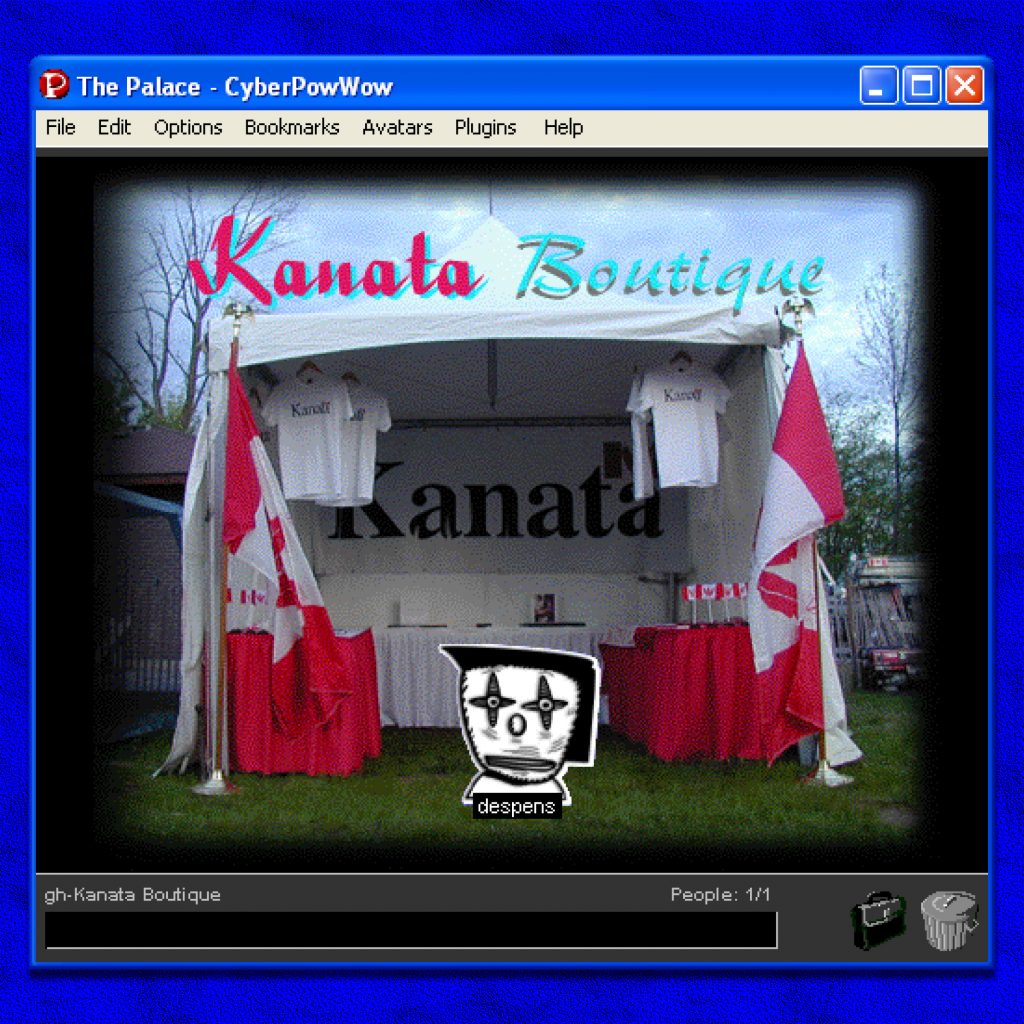The Gray Market
Why the Crypto Winter Could Actually Be a Good Thing for Digital Art
Our columnist analyzes two new nonprofit digital projects to try and chart a path out of tech's boom-and-bust cycle.

Our columnist analyzes two new nonprofit digital projects to try and chart a path out of tech's boom-and-bust cycle.

Tim Schneider

Every week, Artnet News brings you The Gray Market. The column decodes important stories from the previous week—and offers unparalleled insight into the inner workings of the art industry in the process.
This week, expanding the aperture…
After toggling back and forth between blockchain-based and blockchain-averse art concerns for another five frenzied days, I left Miami Art Week 2022 convinced that digital artwork and digital engagement at large have been unfairly burnt by the crypto space’s yearlong descent into hell.
Many I spoke to in the industry either implied or stated outright that the bloodbath in blockchains all but eliminates the incentive to prioritize virtual practices and digital strategy. But conversations with a vanguard of software-first art professionals show key ways in which that majority opinion is misguided—and two new digital projects in the nonprofit sector show what the art world stands to gain by course-correcting.
How bleak is the situation in the cryptosphere? Over the past year, the price of Bitcoin has dive-bombed from about $51,000 to $17,000, while the price of Ether has plummeted from about $4,400 to $1,250. The Terra/Luna debacle proved how readily so-called algorithmic stablecoins can betray their branding (and their investors) by disintegrating in short order. Looming over all of this like an approaching funnel cloud is the sudden unwinding of FTX and the accompanying fears that it will unleash a self-perpetuating cycle of destruction in the crypto space.
The blowback on the art world has been obvious to anyone paying attention. Digital artworks of any kind, let alone with a crypto component, were few and far between on the actual sales floor at Art Basel Miami Beach last week. Only four of the 288 exhibitors there were currently using Arcual, the new blockchain-based transaction platform co-owned by MCH Group, the Luma Foundation, and BCG Digital Ventures, according to public remarks made by the company’s CEO at a launch event Thursday morning. Zooming out further, a handful of NFT platforms including Looks Rare, Sudoswap, and X2Y2 on the Ethereum blockchain, as well as Magic Eden on the Solana blockchain, have jettisoned paying mandatory resale royalties to artists to maximize profits.
The natural impulse is to view the carnage through the narrowest possible lens: “Is this the end of crypto, at least in the art world?” My answer is a firm no. Too much money, too much engineering talent, and too many legacy institutions have already moved into blockchain-based ventures for the whole enterprise to go to zero. And when I say “legacy institutions,” I’m not just talking about art nonprofits like the Buffalo AKG Art Museum and the U.K.’s Whitworth Gallery. I’m talking much more so about institutions in the Wall Street sense of the term, such as Goldman Sachs, Google, and a cadre of other industrial colossi in the for-profit sector.
As usual with all-or-nothing conversations, however, there’s scant value to be extracted from discussing the unlikely demise of crypto. “The boom-and-bust hype cycle never feels like a good way to build long-term interest, care, and value in digital art,” Rhizome co-executive director Michael Connor said in an interview.
A more useful response to this intermission would be to focus on some of what has been happening in digital spaces outside the domain of blockchains, NFTs, and the financialized vision of art that they tend to prioritize. After all, artists and their collaborators have still been pushing forward on software-based projects independent of crypto even while crypto was at its zenith in the public consciousness—and they’ll keep pushing on these fronts even if (or when) crypto bounces back.
In an attempt to restore some much-needed nuance to the discourse, then, here are two lessons about the possibilities of digital art and engagement from experts with years, if not decades, spent working through these disciplines. Keep them in mind as you join me in muddling through cyberspace’s importance to art, regardless of crypto’s rehab timeline.

Users engage with artist Carla Gannis’s augmented-reality work Welcome to the wwwunderkammer (2022), the first of PAMM’s New Realities commissions. Photo: Lazaro Llanes. Courtesy Pérez Art Museum Miami.
As elementary as that statement sounds to digital-first readers, my time among the traditionalist segments of the art trade in Miami Beach suggests that it needs to be said.
A vital energy source in the crypto run-up of 2021 was that NFTs had finally transformed software-based art—a notoriously brambly category when it came to sales—into a commodity that could support an active market. This metamorphosis turned out to be a gift and a curse in the medium term. The format ensured that digital works could be easily bought, sold, and marketed in discrete units; it also left most of the participants in (and observers of) that trade uninterested in digital works striving to be much of anything else.
“So much of the crypto hype cycle has been about investing in artwork as a product, not investing in an artist or a practice,” Kelani Nichole, the owner of veteran new-media-focused Transfer Gallery, told me in Miami. In this sense, the sudden profitability of NFTs backfired, as a new audience for digital work took little interest in stewardship, scholarship, or other activities crucial to building genuine art appreciation.
Still, this problem isn’t unique to NFTs and digital art. “The market applies a certain logic and thinking about how to sell a work that has an impact on artistic practice,” Rhizome’s Connor said. “I can think of so many years in New York where artists would start making flat things that hang on a wall just so they would sell.” The phenomenon isn’t confined to modern times in the art market’s epicenter, either.
“You could argue the invention of the five-by-five-foot rectangular canvas is analogous to the NFT, because suddenly you had something that could be sold and moved easily. Something legible to financial systems,” Jay Mollica, the director of digital engagement for the Pérez Art Museum Miami (PAMM), said in an interview last week.
Celebrating the multiplicity and accessibility of digital art is one key part of Mollica’s job. Here, he said, the questions that guide him are twofold: “How do we appreciate digital art not as a single medium but as a variety of mediums? How do we think of the museum as a digital platform, not just a physical site?”
One answer to those questions is PAMM’s “New Realities” initiative. Launched midway through Miami Art Week 2022, “New Realities” is an ongoing series of augmented-reality artworks commissioned by the museum. The campaign leads off with New York artist Carla Gannis’s Welcome to the wwwunderkammer (2022), a retrofuturist romp that mashes up the history of software, the origins of museums, and the chief tensions emerging from the most advanced technologies of today. The star of Gannis’s virtual show is Lady Ava Interface, an A.R. sculpture inspired by Lady Ada Lovelace (who is widely considered the first computer programmer) that tours users through a digitally animated cabinet of art-tech wonders. (Nichole curated the project.)
“I’m not speaking for the curatorial side, but what is great about working in museums is that there’s more agency to work with art that defies financialization. Personally speaking, I find art that can’t be sold to be more interesting and boundless than art that’s made to be sold,” he said.
This potential for boundlessness is just as, if not even more, present in digital practice as it is in painting, sculpture, or other art forms that have been with us for much longer. We shouldn’t forget that fact no matter how long the current crypto swoon lasts.

Greg A. Hill, Buffalo Wood, Kanata Boutique (2004), included in CyberPowWow (1997–2004).Palace, Windows XP. Screenshot 2022. Courtesy of Rhizome.
At this point, one of the only things that might destroy the crypto space would be a mind-control technique that compelled participants to do a shot every time they used, read, or heard the word “community.” If unleashed, this tactic would knock out everyone involved via alcohol poisoning in seven days or less.
But crypto heads’ allegiance to the concept of community doesn’t mean they have a monopoly on it or how it’s enacted. “Digital culture really happens in community,” Connor said. No matter what the particular technology at hand is, without exchange, without relationships, we’re all just tapping and typing into the void.
An upcoming project from Rhizome adds dimension to this observation. On Saturday, the organization will restage CyberPowWow, a major online art exhibition described as “an Aboriginally determined territory in cyberspace,” at the New Museum. (An online-only component will follow in early 2023.) Curated by the Nation to Nation collective (made up of artists Skawennati, Ryan Rice, and Eric Robertson) from 1997 through 2004, the initiative brought together works by Indigenous artists and selected “settler artists” in a networked, graphical chat interface enabling exploration and communication. Central to the effort was a series of physical community centers, called gathering sites, across North America where primarily Indigenous community members welcomed visitors, offered food, and assisted them in using on-site computers to access the digital works.
On one hand, CyberPowWow represents an “alternative net art” to the one Rhizome has previously been foregrounding, according to Connor. (He noted that the exhibition was left out of initial research for Rhizome’s Net Art Anthology.) “It had its own discourse, its own history, its own set of concerns in terms of working with this nascent medium. It was a movement in its own right,” he said.
That would be reason enough for Rhizome to celebrate the exhibition now. But CyberPowWow also “resonates in important ways with the present moment” for Connor and his collaborators, he said. The initiative represents a “hybrid idea of a virtual community that was both online and off,” one that “can develop alongside existing communities rather than replacing them.” He sees it as a counter to the extreme, screens-or-nothing version of digital space that proliferated during the pandemic—incidentally, when NFTs hit escape velocity—and still continues to some extent today.
CyberPowWow’s expansion and humanization of access points dovetails with PAMM’s “New Realities” initiative, too. The latter’s A.R. works can be activated by navigating to a particular URL on any smartphone, then pointing its camera at any PAMM logo, anywhere. It makes no difference whether the logo is rendered on another digital screen, printed on a bus-shelter ad, or emblazoned on a coffee mug. All roads lead to the same virtual destination, broadening opportunities to get people involved, either alone or together.
“One of the defining qualities of digital art is that you don’t know how you’ll find your audience. It could be in the physical gallery with an HDR screen. It could be when they’re hung over in an airport on their phone. It could be when they’re researching something at midnight with 100 browser tabs open,” Mollica said. “Our strategy is about releasing some of that control and letting people engage in whatever circumstances they’re in at the time.”

Simon Denny, NFT Mine Offset: Ethereum Kryptowährung Mining-Rig 45 MH/s, (2021). Image courtesy of the artist and Petzel, New York.
No matter when cryptocurrency prices and NFTs escape the torture chamber, we should be cautious not to view the blockchain as an automatic disqualifier for enlightened forms of digital art and digital engagement. As ever, the technology bows to the philosophy and the goals guiding its use in any given expression.
“A lot of what gets packaged as Web3 is just a continuation of Web2 with slightly different infrastructure,” Connor said. “Looking at the tech landscape, a lot of capital is flowing to projects that operate pretty similarly to what we’ve seen in the past. The most interesting aspects of blockchain are becoming more fringe again, and what we think of as the mainstream of Web3 is just the rebranding of what we already had.”
For their part, Mollica and PAMM have been studying crypto well before 2022. For instance, the museum convened a panel discussion on NFTs’ long-term challenges with leading thinkers in the space, including AKG Art Museum curator Tina Rivers Ryan, Art Blocks chief creative officer Jeff Davis, and artist Sofia Crespo in December 2021. “Whether or not [crypto] is right for us hasn’t clarified itself,” Mollica said, emphasizing that PAMM is taking a “methodical” approach rather than a “reactive” one.
This is all the more reason not to make sales the alpha and omega in measuring the success of any digital venture, especially in the short term. Every market goes through cycles. Whether we’re talking about early visions of virtual worlds or new steps into mixed reality, a more valuable signifier is their reach into the public imagination and their longevity as a resource for future explorations into art, software, and their convergence. In a bull market, the lure of big money can distract from that truth. Right now, though, there’s room for the main idea to once again be the main idea.
“I do love a bust in some ways,” said Connor, who discovered net art after the dotcom bubble burst roughly 20 years ago. “It’s a moment where the pressure or the perception of incredible profits to be made lifts, and people can think in other ways about what they want.”
That’s all for this week. ‘Til next time, remember: the surest, and maybe the only, way to get easy answers is to stop asking hard questions.